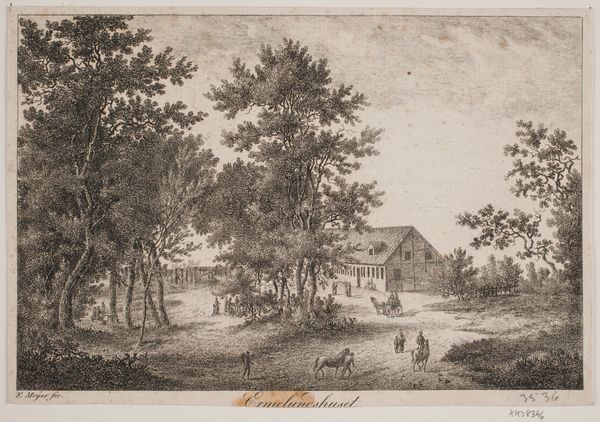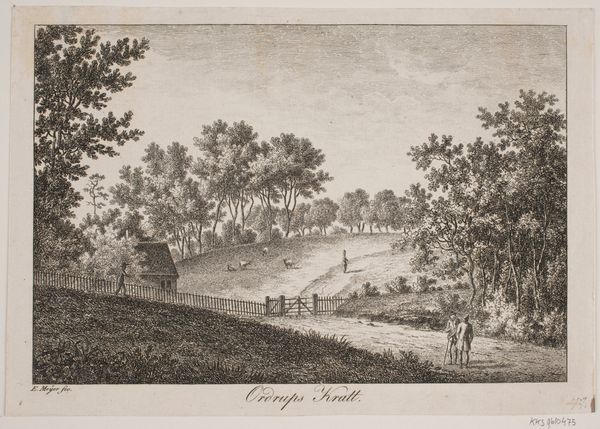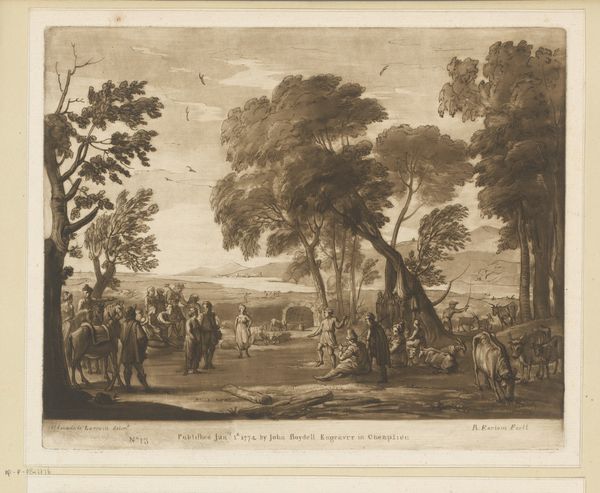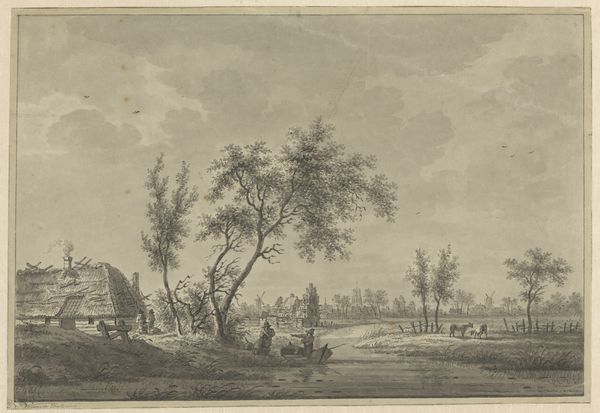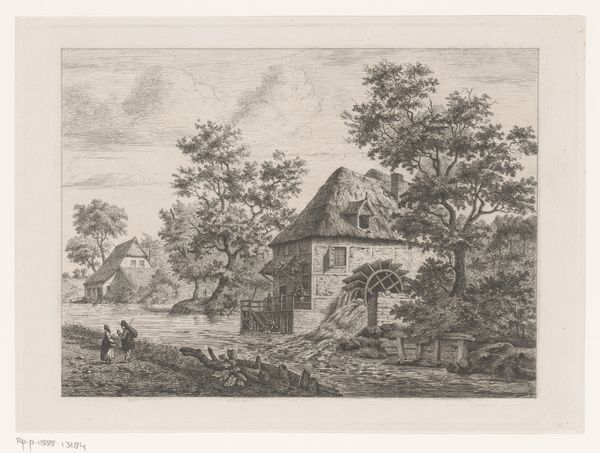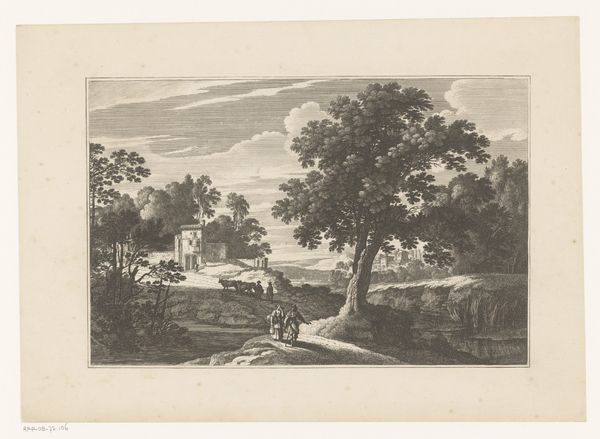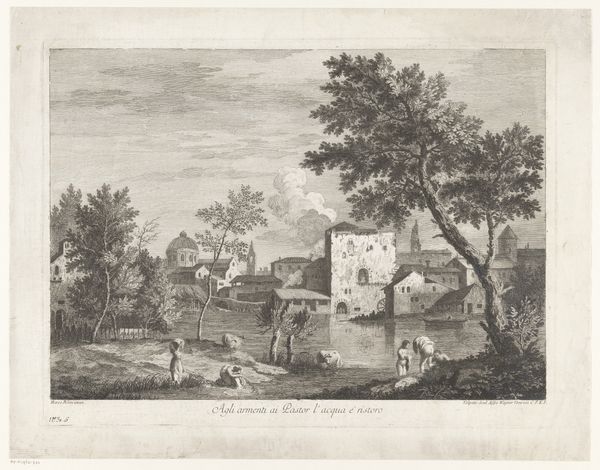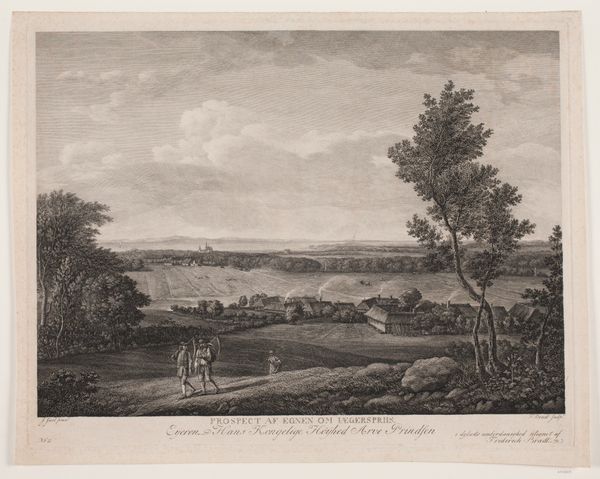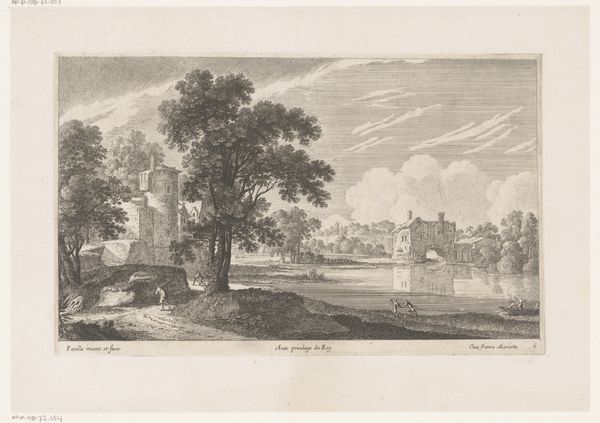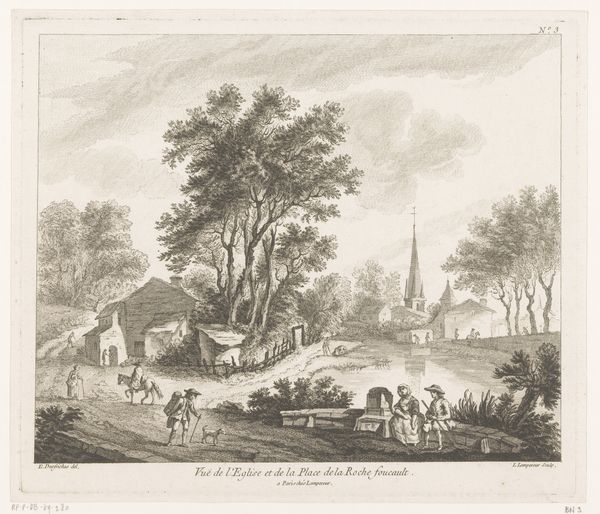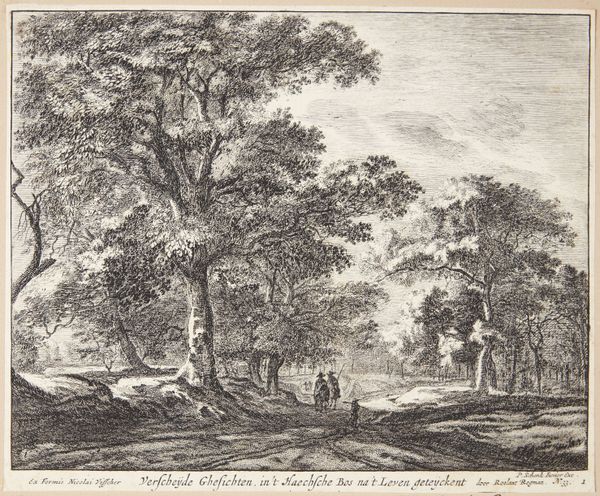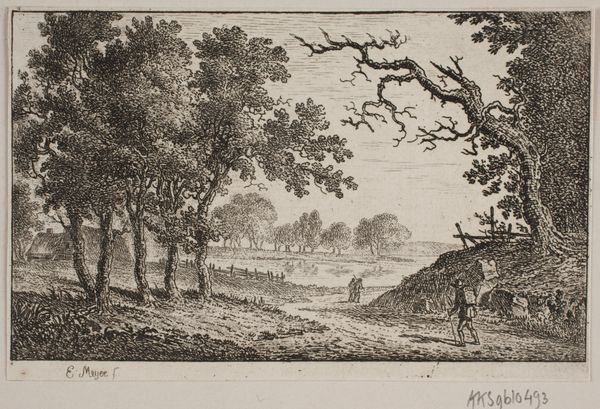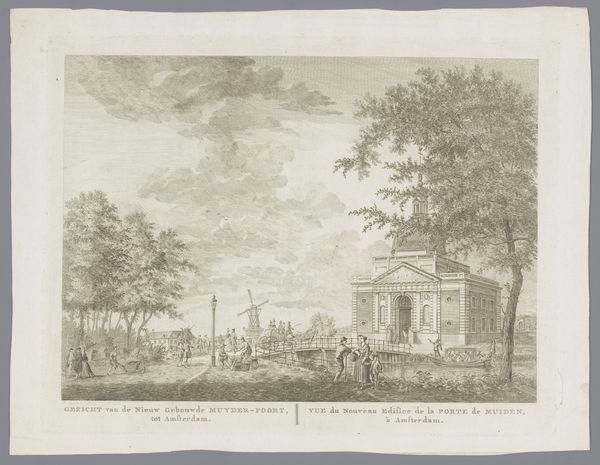
print, engraving
#
neoclassicism
# print
#
landscape
#
etching
#
engraving
Dimensions: 145 mm (height) x 209 mm (width) (bladmaal)
Editor: This is "Eremitagen i Dyrehaven" by Elias Meyer, made sometime between 1763 and 1809. It’s a print – etching and engraving – and it depicts a hunting lodge within a park. I find the scene so serene, almost dreamlike. How would you interpret this work, considering its historical context? Curator: This print offers a fascinating glimpse into the 18th-century aristocratic engagement with nature. Dyrehaven, or the Deer Park, was a royal hunting ground. Representing the Eremitage hunting lodge in print served a very specific public function. Consider, who was this imagery *for*? Not the general public, likely, but rather for circulation within a certain class. Editor: So it’s less about the inherent beauty of the landscape, and more about status and access? Curator: Precisely. Prints like these helped circulate ideas about ownership and privilege. The controlled "nature" seen here is a direct reflection of societal structures. Note how the deer are presented, almost staged. This isn't wilderness; it’s a carefully curated space. Does knowing that affect your perception of the dreamlike quality you initially identified? Editor: Definitely. It’s less of a dream and more of a carefully constructed reality for a specific audience. I suppose it puts a different spin on "landscape art" in general. Curator: Indeed. And think about the power dynamics embedded in who could access such scenes, both in reality and through their visual representation. Visual media wasn't, and still isn't, neutral. Editor: This gives me a new lens through which to consider landscape art. Thank you! Curator: My pleasure. Looking beyond the purely aesthetic allows for a more complete understanding.
Comments
No comments
Be the first to comment and join the conversation on the ultimate creative platform.
